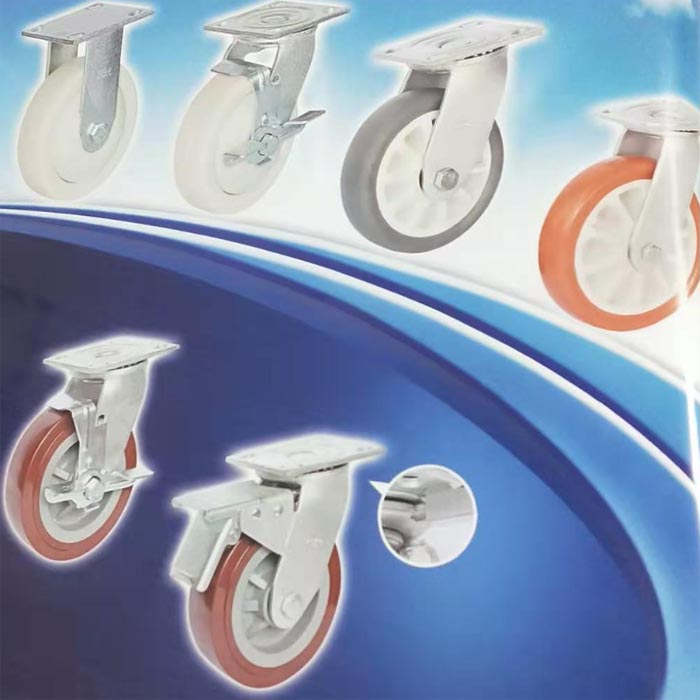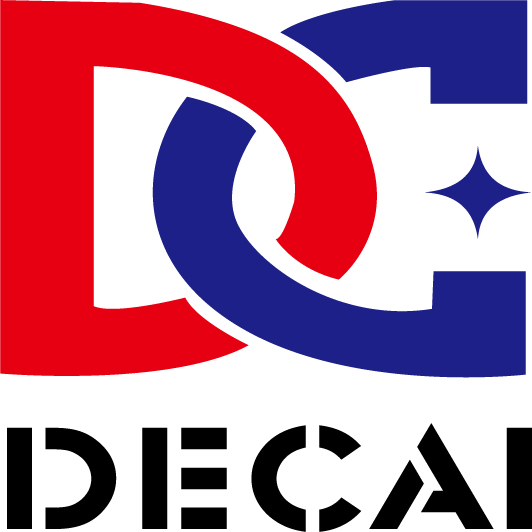As we all know, galvanizing casters is actually a surface treatment technology that is coated with a layer of zinc on the surface of caster alloys, which is mainly for aesthetics and rust prevention. However, there are many ways to galvanize casters, and various methods of galvanizing are used in different places. The following universal wheels will introduce several methods for galvanizing casters.
1, cyanide zinc plating
Because cyanide (CN) is highly toxic, environmental protection puts forward strict restrictions on the use of cyanide in the electrogalvanization of caster hardware, and continuously promotes the development of the reduction of cyanide and the replacement of cyanide caster hardware. It is required to use low cyanide (microcyanide) caster hardware part electroplating solution. The quality of the caster hardware after electroplating using this process is good, especially the color can be maintained well after the color plating is passivated.
2, zincate zinc plating
zincate zinc plating process is evolved from cyanide zinc plating. At present, the two major factions formed in China are:
(1) "DPE" series of Wuhan Material Insurance Institute
(2) The "DE" series of the Radio and Television Station
Both of these are zincate zinc plating with alkaline additives; the PH value is 12.5~13. The lattice structure of the coating using this process is columnar, with good corrosion resistance, and is suitable for color galvanizing.
Typical formula: NaOH-110~120g/l; ZnO--11~12g/l; 94--5~7g/l. 94 is the product code name is the combination of "DPE-Ⅱ" and ethanolamine.
Note: After the product comes out of the tank —> water washing —> light (nitric acid + hydrochloric acid) —> water washing —> passivation —> water washing —> water washing —> scalding and drying —> drying —> aging treatment (80~90oC in the oven).
3, chloride zinc plating
Chloride zinc plating process is widely used in the electroplating industry of caster hardware, accounting for as high as 40%. After passivation (blue and white), zinc can be used to replace chromium (comparable to chromium plating). Especially after adding water-soluble varnish, it is difficult for laymen to distinguish whether it is galvanized or chromium plating. This process is suitable for white passivation (blue white, silver white). When the customer has no special requirements, it is better to choose silver passivation (the color remains relatively stable).
Typical formula: KCl--180~220g/l; ZnCl--65~75g/l; H3BO3--25~30g/l (buffer); PH value of 5~5.5; CI-87--15~20g/ l (brightener).
4, sulfate zinc plating
The sulphate zinc plating process is suitable for continuous plating (wire, strip, simple, thick and large parts, parts) with low cost.
Typical formula: ZnSO4--300~500g/l; H3BO3--25~30g/l; PH value: 4.5~5.5; zinc sulfide--15~20g/l (brightener).


Medium-sized casters, including 3, 3.5 inches, 4, 5 inches, plate thickness 3.8, frame thickness 2.8, weight, non-market cut corners designed medium-sized casters are comparable, can be matched with single-axle PVC, double-axle PVC, hot wheels, double-axle PP Wheels, through-flower wheels, TPR, PU wheels, etc., to meet the needs of various customers. Directional, with brakes, suitable for luggage carts, etc., quiet and durable.
Bracket features: double bead plate structure, high-quality steel plate, excellent capacity, acid, alkali, and salt solution resistance.
Wheel material: The wheel is made of natural high-quality PU, which is flexible when rolling and has low sliding noise.
Wheel diameter: 75, 90, 100, 125
The wheels can be equipped with bearings: flat ball bearings, enclosed ball bearings
Single wheel optional support: flat plate, screw type, plunger type, hole top type.
Applicable temperature range: -30℃+80℃
Tread hardness: 65 (±5) shore A
Brake option: side brake---only brake wheel
Nylon double brake in the middle---the brake wheel locks the bracket at the same time.
The middle metal double brake, the brake wheel surface locks the bracket at the same time.
Scope of application: a good partner for casters, turnover carts and trolley casters for electronic equipment, semiconductor communications, military, medical, aerospace and other industries.
All the above data are from DECAI's internal testing and are for reference only!

Post time: Apr-22-2021
